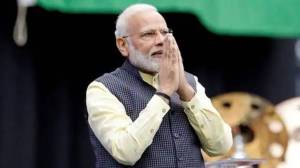Cash News
Finance Minister Nirmala Sitharaman on Tuesday put up a strong defence of India’s financial sector regulators, saying they have brought “greater transparency into the system,” with a “world-class job” that peers elsewhere looked up to.
Iterating that her comments weren’t specifically regarding the recent allegations against SEBI chairperson Madhabi Puri Buch, the minister said, “there’s a lot to be looked into in terms of the facts which are coming out on this matter.”
“I’m not against any kind of questioning, review, or critiquing (of regulators), but we have to be extremely conscious that we look at our regulators for what they’ve done,” Sitharaman said, citing the “rapidly growing” Indian markets, banks and the insurance sector.
Speaking at the FE Best Banks Awards in Mumbai on Tuesday, the minister also called upon banks to strike a prudent balance between over- and under-lending, and desist from high-risk, long-term funding of infrastructure and other projects, for which there are designated lenders like National Bank for Financing Infrastructure and Development (NabFID). “Over-lending means the risk (of) insolvency. Under-lending, on the other hand, affects profits and economic growth. Banks will have to be carefully balancing between the two… the right prudence of lending to create profits, while keeping away from risks, is what creates Best Banks,” she said.
Amid concerns over a new bout of populism in the run-up to the 2024 general elections and thereafter, the minister sought to differentiate between what is being referred to as “freebies” (profligate welfare spend), which she is firmly against, and keeping “a welfare kitty that can be supported by the Budget, and is in alignment with the fiscal situation.”
She, however, noted that some state governments were giving promises they couldn’t sustain, and cited committed expenditure of a few of them reaching staggering levels of 50-80% of their total budgets. Such states, she said, would do better with a medium-term plan to ensure that “their finances are (sufficient) to spend for development aspirations.” The minister urged the states to find newer sources of revenues, rather than being confined to conventional areas.
Sitharaman said she wouldn’t yet take any position on (the Economic Survey 2021 prescription) that the Reserve Bank of India’s inflation targeting framework should be tweaked to consider targeting inflation excluding food. She, however, said that the baskets of consumer and wholesale price indices “don’t seem to have much of a commonness,” and acknowledged the need to “thoroughly look at the components in the (CPI) basket.” The instrument through which you assess the impact of inflation would have to be period-relevant, she stressed.
Asked if decision-making in Narendra Modi 3.0 (coalition) government was any more difficult than the previous two where the BJP had absolute majority on its own, Sitharaman said, “the pressure on us (ministers) to perform has been the same since 2014.” On roll-back of decisions like allowing lateral entry into top layers of the bureaucracy, she said, “each time a decision is taken or a project is launched, if inputs of critical value come in, we would always take them.”
“Cabinet decisions on major schemes worth Rs 15 lakh crore have been taken (by Modi 3.0).. this cannot happen without enough groundwork. So the pace continues to be the same, if anything, it’s even faster now, because you’re looking at 2047, more closely than you did earlier.”
On the stagnant share of manufacturing at 15-16% of the GDP over the last decade and more, Sitharaman said production-linked incentives (PLI) have brought “in a quality of difference to manufacturing” in most sectors where these are available, except one or two. “Not just in mobile phones (manufacturing), but I find interest in renewable energy, chip manufacturing and other aspects of semiconductors, other elements of the green energy, like hydrogen, advanced chemistry cells etc.”
On the relative weakness of consumption, Sitharaman said the situation was getting better both in the rural and urban areas, because of the various targeted schemes. “We need to have more support as and when we can send them, but consumption can be supported, not just through revenue expenditure. It can be better served through capital expenditure,” she said.
“The multiplier resulting out of (capex) is far more than the one from boosting consumption through directly putting money in the pockets of people. So that is one of the ways in which we are trying to target and bridge inequality,” the minister added.






